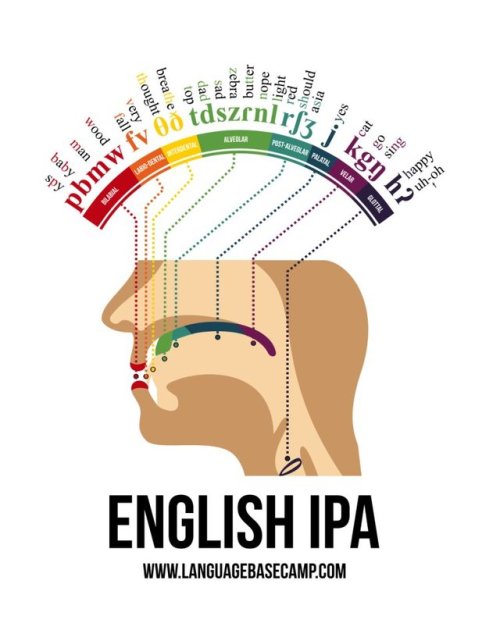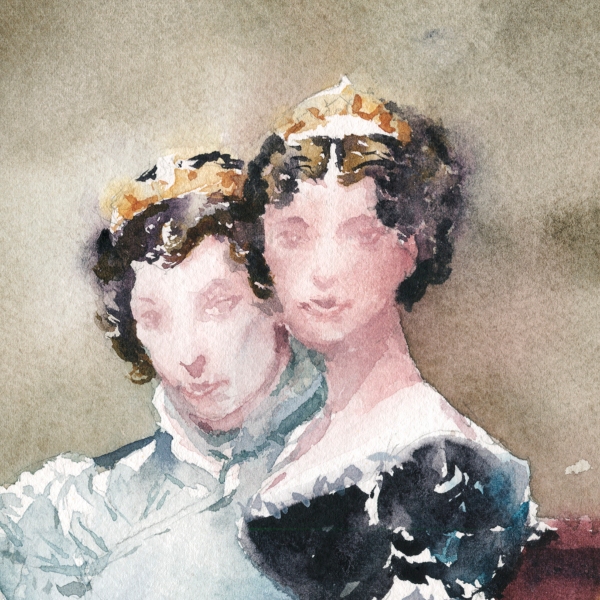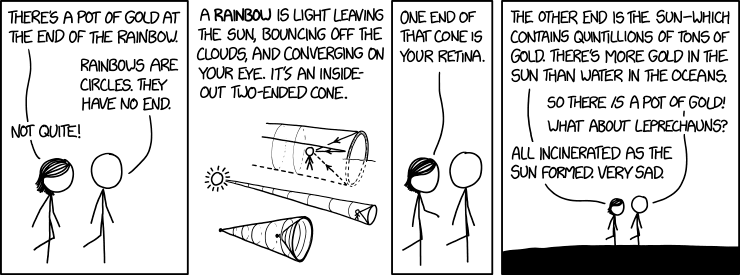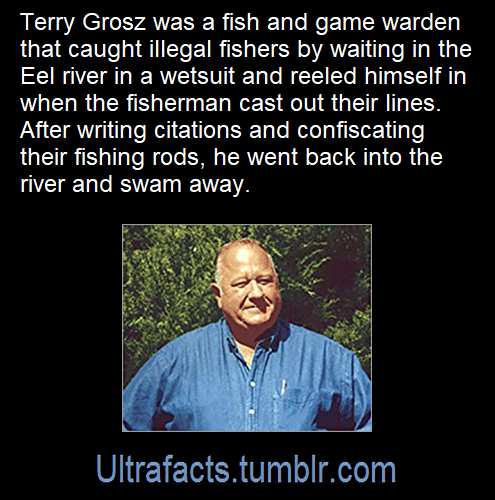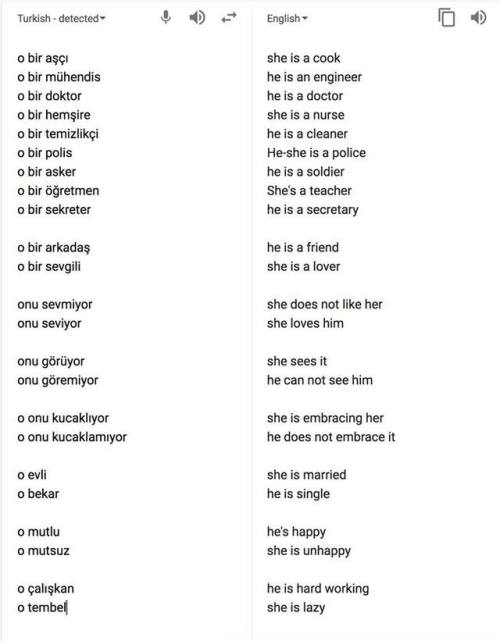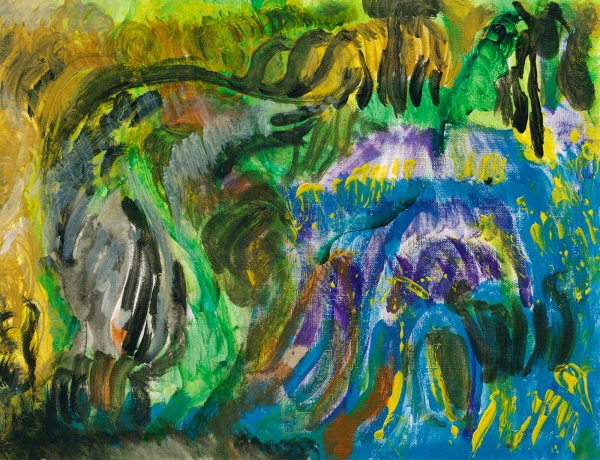
A few years back, (2016 ) my stepfather, who has advanced semantic dementia (similar to Alzheimer’s disease), had a six month-ish burst of creativity in which he made a series of paintings in acrylic.
He started quite abruptly and stopped cold-turkey when he couldn’t make the color choices any longer.
He had not, to anyone’s knowledge, ever made a drawing or painting in his life before these.

I’ve read that sudden outbursts of creativity are common in people with degenerative brain disease. I suppose, as they get worse and worse at communicating verbally, they’re looking for some other way to express themselves.
At the same time they’re losing inhibitions and self regulation, and suddenly they find themselves able to access a state of un-fettered creativity.
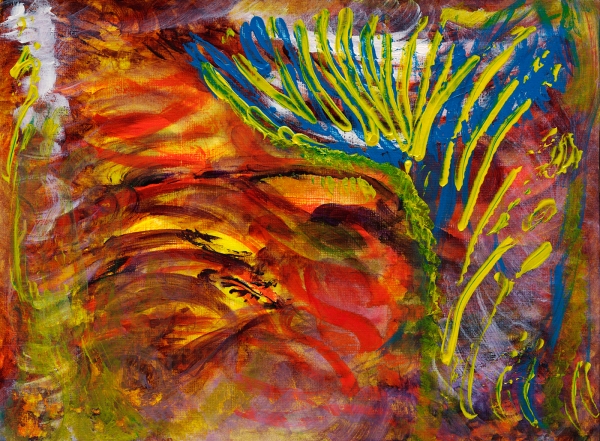
Even though these works are entirely abstract – just color and brush marks – I still imagine a surreal landscape or emotional ‘space’ created by the color.
But there’s no way to know his true artistic intent – or even if there IS a thought process behind the work.
There’s a jibe to be made between art schools: maybe this is no different from any abstract artist. Can we ever know that non-objective painting isn’t just completely random color choices?
At this point he couldn’t sign his name or print letters, or even reliably operate our coffee machine. I watched him spend 20 minutes considering (unsuccessfully) how to assemble a screw, washer and nut. So I was surprised to see this amount of dexterity with a paint brush.
He did some of the work, drawing with the paint tubes directly. Skipping the step of mixing color, using them sort of like a crayon. Squeezing paint onto the canvas.
I had an instructor back in art school who did the same thing, though his works were monumental in size and many inches thick. Very expensive paintings.

It’s worth noting, my stepfather has been red/green colorblind his whole life. So he sees these works more duo-chromatically than we do. Here’s a chart I found of what that looks like.
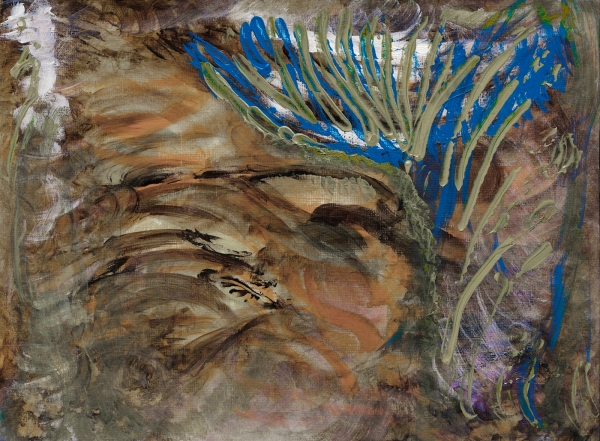
That might make the red painting above look like this. (Color adjusted in photoshop). But, as there’s no way to know that for sure, I won’t make this adjustment with all the work.

As well, he’s unable to tell us for sure in which orientation the art should hang. He can make a choice when you have a finished frame to show him, but it’s not clear he wouldn’t change his mind if you asked twice.
We actually didn’t take the time to watch him at work. Which, I now regret. Ironic that I’ve been teaching art for a few years, but we never talked about his things. Of course I thought about trying to help him a bit. But it’s complicated. I didn’t want to do anything to jinx his process. He was producing things at a brisk pace. People get antsy if you hover when they’re painting. So why get in the way?
Anyway, I’ve chosen the orientation for these. and that might impose a context onto them. I tend to think, this one looks like a mountain for instance, so I put it this way up.
If you ask, is it a mountain, or is it a lake, he’ll just agree with whatever you suggest.

I’ve always been somewhat stymied by pure abstraction. Not knowing how to think about it. My own work is fairly literal. I look at the world, and create a personal record. Sure I might exaggerate for effect. But essentially I paint what I see.
With frontotemporal injury, there are people that see vivid hallucinations. Others can look at a clock and all the numbers are jumbled. Some don’t see faces on people’s heads. It’s fascinating to think that these marks might represent something he’s seeing, which we will never understand.
When I look at this pale green surface, my realist’s brain wants to see a forest or jungle. It’s attractive because of the color harmonies. It seems like a ‘good mood’ kind of painting.
His moods will change rapidly over a day. But even prior to losing his self regulation, he wasn’t the kind of person to be in a good mood for long.

This dark forest is a little more of a reflection of his personalty.
I am, in a way, jealous of his freedom to use color and marks without any concern about capturing reality.
It seems like a person with dementia has an advantage over a fully functioning painter who might dabble in non-objective painting, but be unable to set themselves free of describing things.

Unfortunately, his condition is irreversibly progressive.
This burst of visual art was short lived. We didn’t keep exact track of the dates, but I’m recalling, it lasted about six months. Eventually the work began to lose the complexity of mark making and the clarity of color.
These pieces are roughly in chronological order, though there was various amounts of time, and other works, in between.

Just stop and look at this one for a moment.
It might well be a completely random creation with no meaning. Made by a loopy old dude who’s just farting around.
But if you stop and think; this is the artwork of a person who is trapped in his disintegrating mind, aware at times – or possibly at every moment – that he’s lost his intelligence, personality, now his physical independence, and fairly soon his self-awareness will be gone. It’s tempting to say that this guy who can’t speak, or even dress himself, is trying to communicate his state of distress.

He made at least fifty (I haven’t counted exactly) of these paintings on 9×12″ canvas paper and some more on 5×7″ and 8×10″ stretched canvasses.
I think the volume of work is indicative of their importance to him. There was nothing else in this time he would devote more than ten minutes to. He doesn’t listen to music, or watch TV. He won’t sit to be read too for any length of time. Somehow, these were rewarding for him.
He would very much enjoy seeing his paintings framed, or put into portfolio books. And he’s still quite proud of having made these when he sees them today. They’re one of the few things, other than family photos, which he will always comment on.
“I did that. That’s mine”.

Then, one day, there was a sudden decline, and this was as far as he could get.
There’s a few of these essentially unfinished works, done in one color with only part of the surface considered.
Soon after the these pieces, he refused to make any more work, saying he couldn’t do it anymore.

We tried to keep things going by offering him India ink, hoping it would be easier with a single color.
He made about five of these black and white drawings, and would not make any more.







